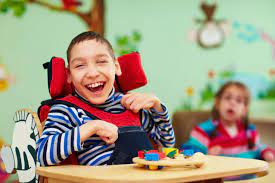
Empowering Children with Autism: A New Approach to Speech Therapy
This year's World Autism Day theme, "Moving from Surviving to Thriving," highlights the crucial shift needed in our approach towards autism. Rather than merely addressing the challenges, it emphasizes creating an environment where autistic individuals can thrive. In line with this vision, recent research offers promising advancements in speech therapy for children with autism, particularly those who struggle with traditional language learning methods.
The latest research introduces a groundbreaking approach to speech therapy, focusing on gestalt language processing in autistic children. Unlike conventional methods, this innovative therapy capitalizes on understanding the child's gestalt language development, making echolalic utterances more meaningful. Studies reveal that a significant percentage of autistic children are gestalt processors, underscoring the potential effectiveness of this approach.
Gestalt language processing represents a novel perspective on language acquisition in autism, yet it remains relatively unexplored in speech therapy discourse, particularly in Hyderabad. However, speech therapists worldwide are increasingly recognizing its significance. By comprehending the unique processing patterns of autistic children, speech therapy can be tailored more effectively to meet their needs.
Children with autism often exhibit echolalic speech patterns, repeating phrases from various sources such as songs, movies, or family members. Gestalt Language Processors utilize echolalia as a means of communication, utilizing 'gestalt units,' which are complete sentences or stories, to convey meaning.
The stages of gestalt language acquisition involve a progression from echolalic utterances to spontaneous and creative language forms. Initially, children produce 'gestalt forms,' resembling echolalic utterances, before gradually understanding syntax and syntactic rules and eventually generating spontaneous language for communication purposes.
In speech therapy for gestalt language learners, the primary goal is to transition towards self-generated language. Therapeutic intervention emphasizes natural and engaging contexts, such as child-led play, to target language skills effectively. Understanding the child's interests and preferences facilitates a child-centric approach, reducing stress and promoting effective communication.
Responding to echolalia and gestalt language requires sensitivity and understanding. Acknowledging the child's communication attempts, avoiding overinterpretation of scripted comments, and embracing the child's language attempts are essential strategies. Being a detective, discerning the true meaning behind scripted language, enables targeted interventions to promote self-generated language.
Dr. Garima, Clinical Director at Hear 'N' Say clinic, emphasizes the importance of understanding children's speech patterns for effective speech therapy. Child-led interventions, tailored to the child's needs and preferences, offer a less stressful and more child-friendly approach. It's time to reassess traditional therapies and embrace child-centric approaches to ensure effective treatment for children with autism.